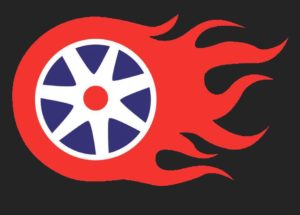With temperatures dropping across the Middle East, this is the best time of year to gather family and friends for long off-roading sessions and day trips. At the same time, a lot of people wonder how to save fuel while driving. Whether you’re driving on- or off-road, there are things you can do to further reduce your fuel consumption and save a bit of money at the pump.
“With families on holiday and people enjoying the cool weather against the backdrop of the festive season, drivers in the region love going on long drives and venturing into the desert and open roads from December onward,” said Pedro Simões, Marketing Director at Ford Middle East.
This is particularly relevant as Middle Eastern motorists prepare to venture off road in the cool December and January weather. While the increase in fuel prices may vary around the region, the following tips could indeed result in tangible savings.
Important service parts include items such as fluids, lights, wipers, wheels and tyres, belts, and brakes. If these are not in good condition, they might be making your vehicle work harder and use more fuel.
Check your tyre pressure regularly and make sure they are inflated to the manufacturer’s recommendation (this will usually be on a placard inside a door sill).
“Under-inflated tyres not only cause more drag and increase your fuel consumption but also cause your tyres to wear out quicker and impact vehicle handling,” says Joe Percy, fuel economy and performance attribute engineer, Ford Australia.
The same goes for any bulky items you might be carrying in the tray or on the roof. You shouldn’t be carrying gear on the roof of your 4×4 that you don’t need there and then. The moral to this story is: Don’t worry about driving around looking like you’re heading out for an overnight desert camping trip if you’re just doing an errand.
Don’t ever shift into neutral when driving down a hill thinking you’ll save fuel – this is a myth and it’s also very dangerous.
Always use cruise control when you can, or adaptive cruise control if your vehicle is equipped with it. Using cruise control allows the vehicle to take control of the accelerator pedal, brakes, and transmission and will operate as smoothly and gently as the traffic allows – delivering more fuel economy and a smooth drive.
“Essentially, you want to be in the highest gear possible pulling the least number of revs necessary to keep you moving comfortably,” said Matthew Roberts, Ford fuel economy and performance attribute engineer. “The best way to drive with economy and comfort in mind is to make use of cruise control – it’s one of your vehicle’s key fuel saving strategies.”
Keep your trailer or caravan well maintained; low tyre pressure, worn tyres or wheel bearings can make your vehicle work harder when towing. If possible, fill up the water tank once you arrive at camp – reducing that weight whilst towing will help save on fuel. And don’t forget to close windows and air vents to maximize the aerodynamics of what you are towing.
“Towing a trailer or caravan is going to see you use more fuel but by keeping your speed down and driving smoothly, and ensuring your trailer is properly maintained you’ll maximize your vehicle’s fuel efficiency,” said Roberts.
“With families on holiday and people enjoying the cool weather against the backdrop of the festive season, drivers in the region love going on long drives and venturing into the desert and open roads from December onward,” said Pedro Simões, Marketing Director at Ford Middle East.
This is particularly relevant as Middle Eastern motorists prepare to venture off road in the cool December and January weather. While the increase in fuel prices may vary around the region, the following tips could indeed result in tangible savings.
Service is serious
Make sure you keep your vehicle regularly serviced by taking it to an official authorized dealer nationwide.Important service parts include items such as fluids, lights, wipers, wheels and tyres, belts, and brakes. If these are not in good condition, they might be making your vehicle work harder and use more fuel.
Check your tires
Under-inflated or worn tyres can increase their rolling resistance, which means your vehicle will be working harder to travel at a given speed. And that means it’ll suck down more fuel. Choose replacement tyres carefully, as non-standard aftermarket tyres can drastically degrade the fuel economy of your vehicle.Check your tyre pressure regularly and make sure they are inflated to the manufacturer’s recommendation (this will usually be on a placard inside a door sill).
“Under-inflated tyres not only cause more drag and increase your fuel consumption but also cause your tyres to wear out quicker and impact vehicle handling,” says Joe Percy, fuel economy and performance attribute engineer, Ford Australia.
Weight is your enemy
This is one that can be hard for 4×4 owners to side-step. Install a bull bar, driving lights, roof racks, and an extra spare wheel and the weight begins to add up. What you want to try and do is remove anything you’re not using, such as by emptying the gear out of drawers in the back of your 4×4, or the 12V fridge you might have stored in the boot.Be aerodynamics conscious
While modifying your vehicle with some aftermarket accessories can improve the vehicle aerodynamics, most will result in a degradation, which will force the vehicle to work harder and increase fuel consumption – especially for those who do a lot of highway driving.The same goes for any bulky items you might be carrying in the tray or on the roof. You shouldn’t be carrying gear on the roof of your 4×4 that you don’t need there and then. The moral to this story is: Don’t worry about driving around looking like you’re heading out for an overnight desert camping trip if you’re just doing an errand.
Drive sensibly
Aggressive acceleration and braking can dramatically increase your fuel consumption. Maintain good observation of the road and traffic around you and try to react to changes early so that you can accelerate slower, coast early, and brake gently.Don’t ever shift into neutral when driving down a hill thinking you’ll save fuel – this is a myth and it’s also very dangerous.
Always use cruise control when you can, or adaptive cruise control if your vehicle is equipped with it. Using cruise control allows the vehicle to take control of the accelerator pedal, brakes, and transmission and will operate as smoothly and gently as the traffic allows – delivering more fuel economy and a smooth drive.
“Essentially, you want to be in the highest gear possible pulling the least number of revs necessary to keep you moving comfortably,” said Matthew Roberts, Ford fuel economy and performance attribute engineer. “The best way to drive with economy and comfort in mind is to make use of cruise control – it’s one of your vehicle’s key fuel saving strategies.”
Time to tow
When it comes to towing a trailer, you’re going to use more fuel than when you’re just driving around the city or on the highway. However, there are still things you can do to maximize fuel efficiency, such as keeping your speed down. Travelling 10-15km/h under the speed limit can help save fuel, and it will mean you’ll spend less time hard braking and hard accelerating.Keep your trailer or caravan well maintained; low tyre pressure, worn tyres or wheel bearings can make your vehicle work harder when towing. If possible, fill up the water tank once you arrive at camp – reducing that weight whilst towing will help save on fuel. And don’t forget to close windows and air vents to maximize the aerodynamics of what you are towing.
“Towing a trailer or caravan is going to see you use more fuel but by keeping your speed down and driving smoothly, and ensuring your trailer is properly maintained you’ll maximize your vehicle’s fuel efficiency,” said Roberts.



